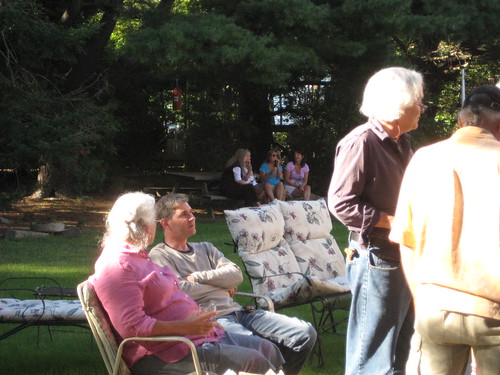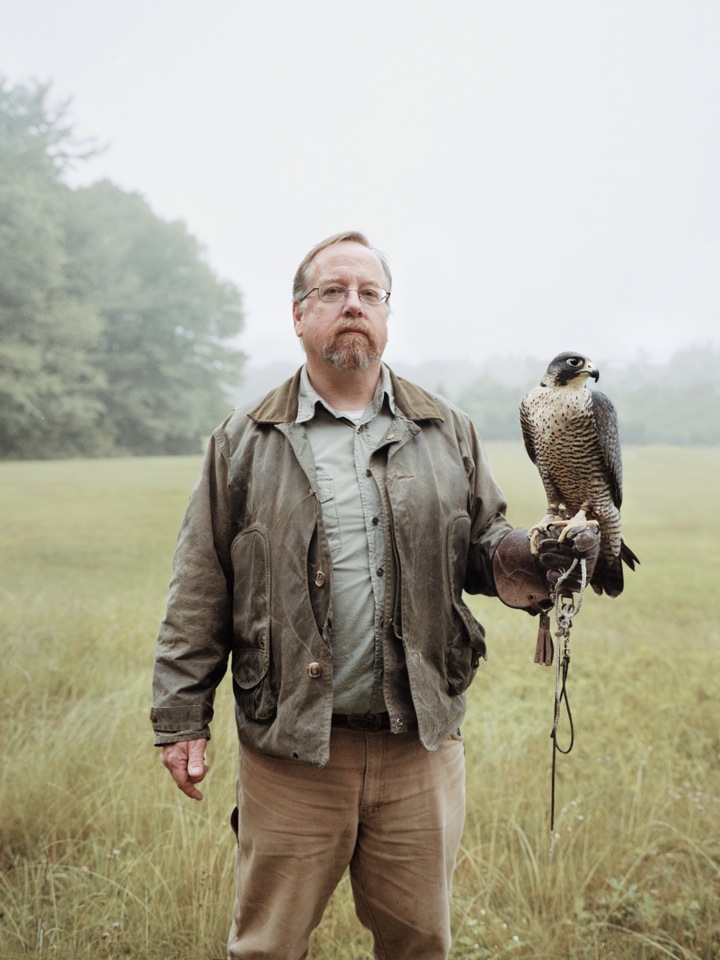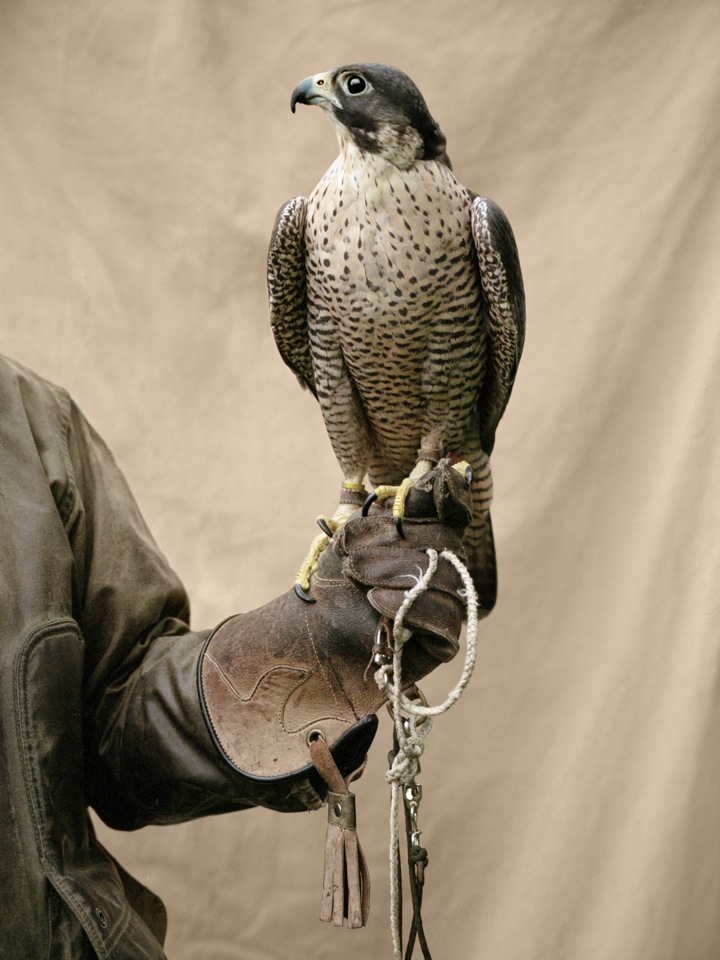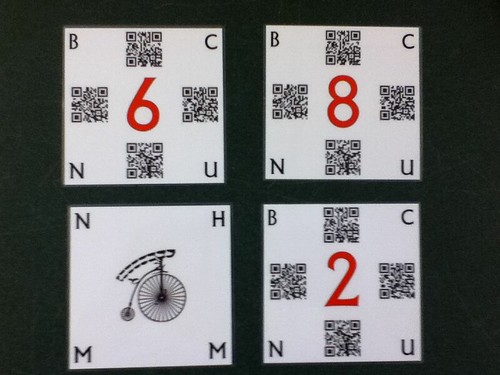Off I went to the South Shore (I think that’s the correct region name) yesterday for a cookout. Not just any cookout, mind you, but a chance to meet Steve and Libby Bodio in the flesh; Steve and I have been corresponding, exchanging links, etc. for quite a few years. If you know anything about the Bodios, you know to expect a diverse crowd, viz. a herpetologist who studied elephant seals before going into the building trades, someone who dropped out of law school to sell (fine) carpets (and fly falcons), etc. It was a great get together and more than a bit of a milestone for me – more on that in a moment.
Steve -on the left- chuckling over an anecdote.
*
The back of Libby’s head (sorry – photojournalism wasn’t a priority and the one portraity picture I took is not great) and Eric, Steve’s last Massachusetts apprentice (many years ago).
*
Note in both photographs the object sticking out to Steve’s back pocket. There’s a story there; I’ll let Steve tell it, but in the meantime guess away as to it’s identity.
Steve hasn’t been east in many years, so there was a lot of year-totalling-up for him to do with old friends. I’m a newcomer – we’ve known each other on line for 5 years or so – not even the blink of an eye comparatively. That being said, I was thinking this morning about how long I’ve known about him… A Rage for Falcons was the first thing of his I remember reading. I may have read essays or reviews before finding A Rage (in Stroudwater Books when it was in the Pic ‘n Pay Plaza in Portsmouth, for you local old-timers) but the descriptions of falconry in A Rage left a mark and rekindled my desire to fly raptors. I went to the bookshelf and pulled the book, opened it and read ‘copyright 1984’. We’re talking 27 years.
Great conversation (Libby and I talked tazis and teckels – where else could one do that?), great beer (thanks, Throwback), and great hosts (THANKS!, Karen and George). What a day!





